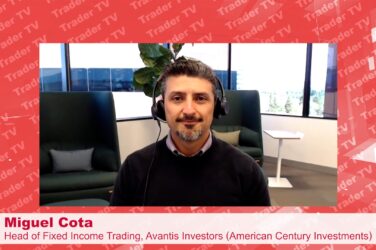The electronic fixed-income market is evolving quickly, but industry insiders caution that investment grade and high yield corporate bond markets cannot bypass crucial developmental stages.
Driving much of this are recent changes at the top of credit desks within some organizations, according to Jim Switzer, head of credit trading at $490 billion asset manager AB.
“We’ve seen in the last 12 to 18 months that a number of equities guys are taking over fixed income trading, and they’re using the equities playbook,” Switzer said last week at an industry briefing.
Although the electronic order-driven market that is the protocol in equities can work in some other asset classes, such as rates and foreign exchange, Switzer said adopting the model in the corporate-bond market would be challenging but not impossible.
“We are always looking for opportunities in the markets to trade where it is not going to cost us,” he explained. “And if that means resting an anonymous limit order in a dark liquidity pool or central limit order book somewhere, we would have no problems going there.”
If asset managers wanted to trade in an order-driven market instead of using request for quote, they’ve had an ample amount of time to do so, according to Chris White, founder of consultancy of ViableMkts and the creator of Goldman Sachs’ GSessions electronic bond-trading network.
“There are no material barriers to adopting that model, but there are some benefits, especially if you are a larger asset manager, to no putting your liquidity on the order book,” he said.
According to White, order-driven markets cannot exist without a pre-existing mature quote-driven market. “Quote-driven markets are the father of order-driven markets, but the market has not organized a quote-driven market in the corporate bond world yet,” he added.
Although there are multiple electronic trading platforms for investment-grade and high-yield corporate bonds, there isn’t the same level of pre-trade transparency as in the equities market.
Switzer sees two versions of pre-trade transparency: what dealers are willing to share with their clients and the liquidity that is available on the electronic trading venues. “The dealer’s balance sheet has not gone away. It still exists, and our visibility is much better,” he said.
To address the fragmented electronic market, AB has developed a liquidity aggregator that collects, analyzes and identifies potential trading opportunities for its traders.
More on Fixed Income:
- MarketAxess Offers Broader Execution Choices for Municipal Bond Market Participants Including More Open Trading™ Functionality
- BrokerTec and MTS add Spain index to RepoFunds Rate
- ICI Reports Combined Estimated Long-Term Fund Flows and ETF Net Issuance
<






